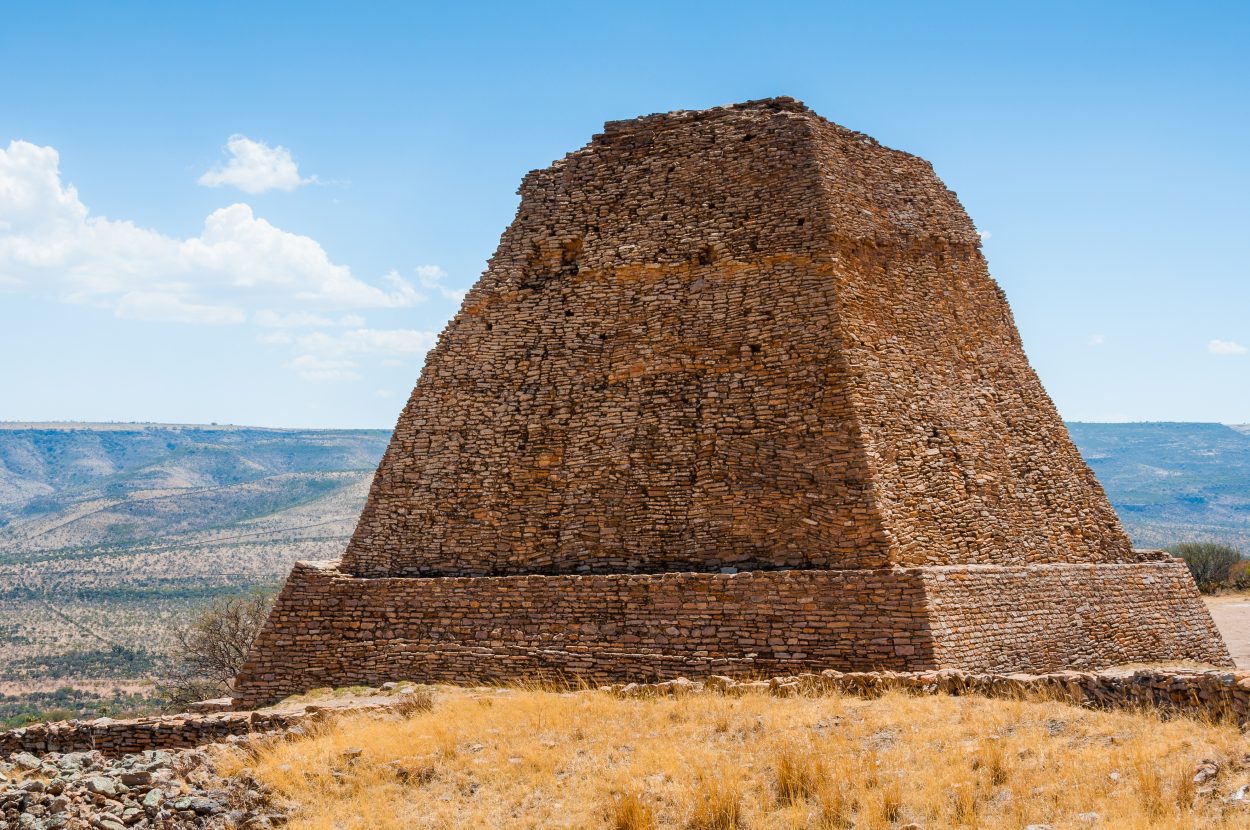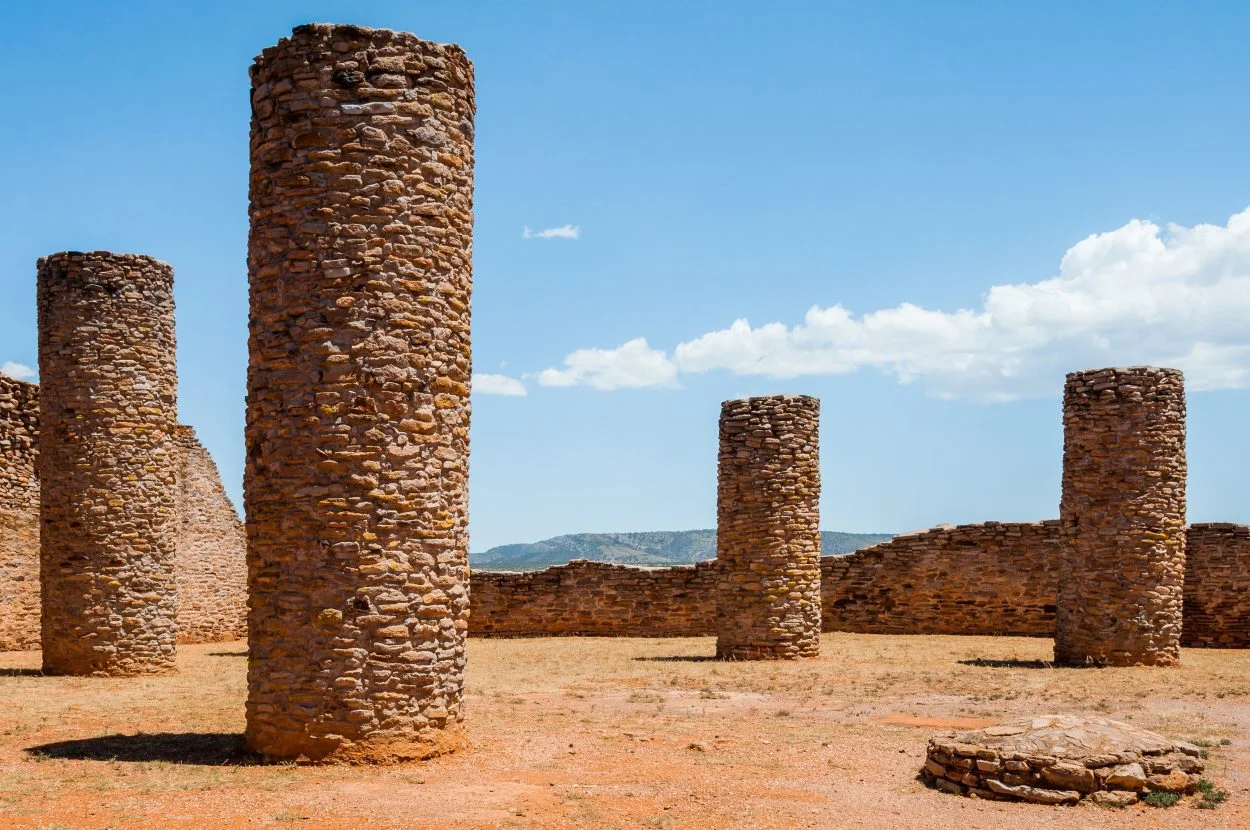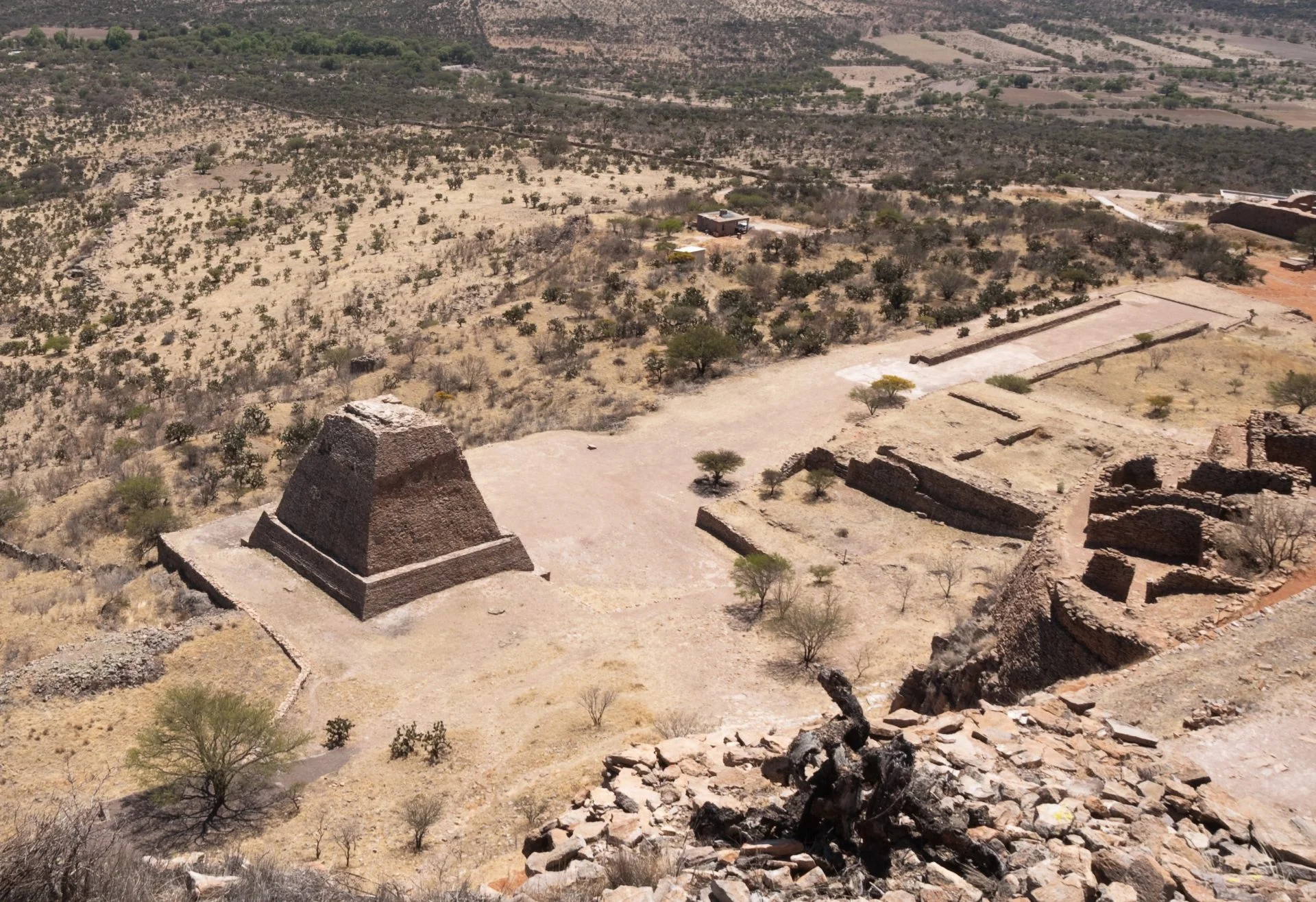La Quemada is a Mesoamerican complex located on a small, central mountain in the Malpaso Valley of central Zacatecas, Mexico.
Situated on the northern frontier or periphery of Mesoamerica, La Quemada has been the subject of various interpretations in an attempt to associate the settlement with different regional cultures.
It has been characterised as a Toltec outpost, a Teotihuacán fortress, a Purépecha centre, a Chichimeca complex and the whimsical 18th century suggestion that La Quemada is the legendary site of Chicomoztoc, from which the Aztec Mexicas, Tepanecs, Acolhuas, and other Nahuatl-speaking peoples considered their mythological home.
The main occupation of La Quemada apparently dates to the Epiclassic period (AD 600–900), although earlier and later dates have been recorded that makes the foundation of the site and extent of occupation inconclusive.

La Quemada is divided into three complexes and consists of masonry platforms that functioned as foundations for the upper structures. The site has a high concentration of ceremonial buildings, some of which are complexes made of 50 patio platforms and thirteen or more pyramids.
Architectonic elements were constructed using rhyolite (an extrusive igneous rock formed from magma rich in silica that is extruded from a volcanic vent) and granite slabs that were quarried locally from the mountainside.
The primary structures include: the Salón de las Columnas (column hall), the Juego de Pelota (ballgame hall), the El Cuartel (headquarters), the Ciudadela (fortified enclosure) the Pirámide de los Sacrificios (sacrifices pyramid) and the 12-metre high Pirámide Votiva (votive pyramid). Surrounding the complex is the Muralla, a defensive 4-metre-high by 3-metre-thick perimeter wall that was constructed towards the end of occupation.

Excavations have uncovered extensive human skeletal deposits, piles of disarticulated and burned bones, suspended skulls and sub-floor burials. Some of the bones were likely deposited in reverence to ancestors, whilst others belonged to enemies and were displayed to symbolise a social order rooted in violence.
Dates obtained from the nucleus of La Quemada suggest that the site was apparently abandoned or much reduced by the time the Toltecs were in their ascendancy. During this period, two phases of destruction by fire has been documented, the first between AD 854 to 968 and the latter between AD 1018 to 1163.
Header Image Credit : Noradoa – Shutterstock





